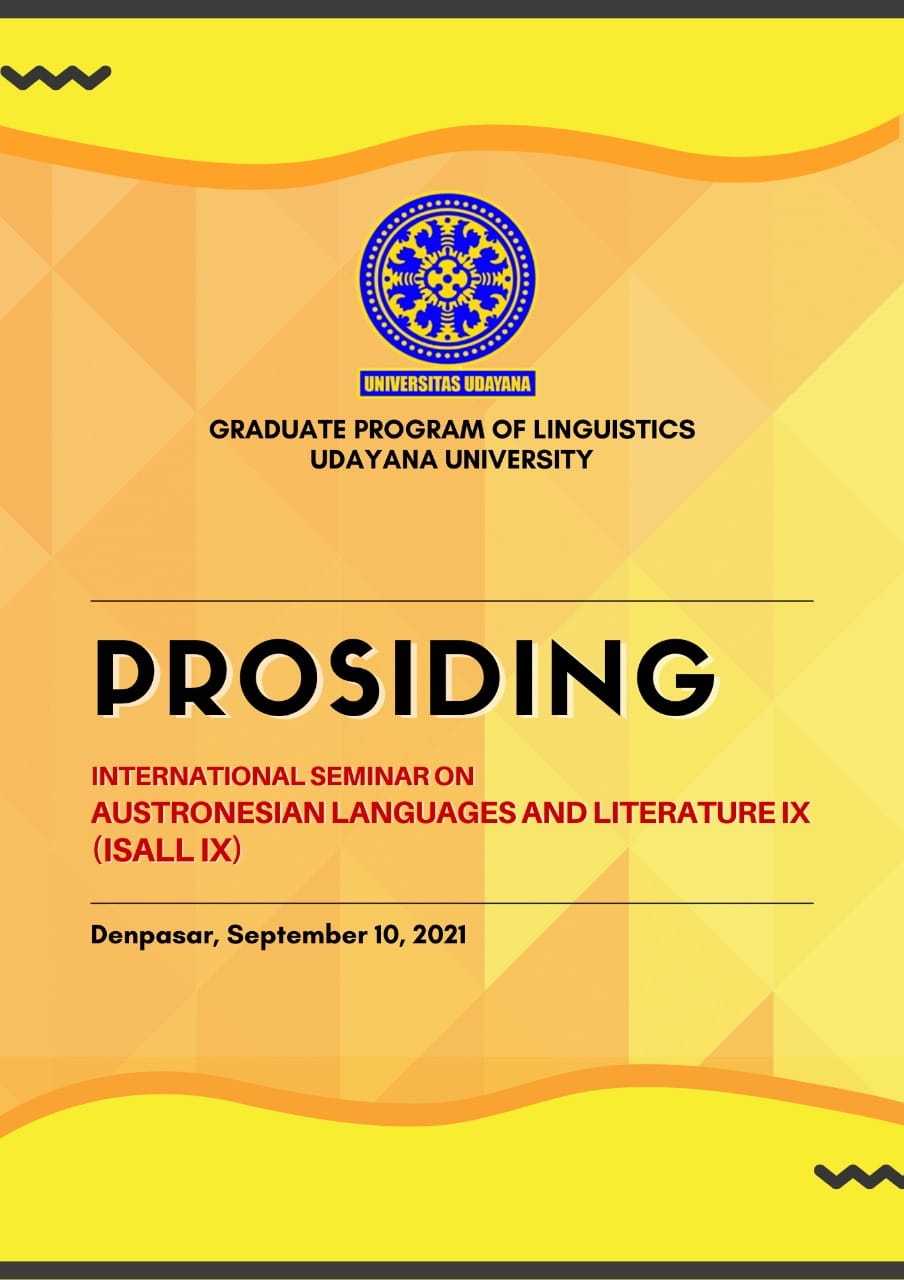The Dynamics of Agricultural Culture Lexicon in Jatiluwih Village, Tabanan: Study Of Cultural Linguistics
Abstract
Bali is known as an agricultural area; especially Tabanan Regency is known as Bali's “rice barn”. In addition, the cultural life of the Balinese people in their daily activities is very close to agricultural culture activities, whether in terms of Parahyangan, Pawongan, and Palemahan. Changes in nature, technology, and tourism cause changes in cultural and linguistic activities (including vocabulary) because language is a vehicle for cultural activities. This study discusses the dynamics of the agricultural culture lexicon in Jatiluwih Village, Tabanan Regency. This study refers to the theory of Tri Hita Karana and complemented by the theory of lexicon. The method of data collection is the speaking and listening method via online in the form of observing the language used by the informants and also by distributing questionnaires to informants via WA and email. Data analysis is carried out by descriptive-explanatory in the form of a description of the research findings and accompanied by explanations and arguments. The results of the study show that there is a significant change in the lexicon in the elements of palemahan, in particular, in the fields of agricultural tools, flora, and fauna. There are also not many changes in the fields of Parahyangan and Pawongan. The changing lexicon tends to be in the noun category and a little in the verb and adjective category. These changes can be caused by the entity or object no longer exists or because of changes in technology, nature, and tourism.
References
Bynon, Theodora. 1977. Historical Linguistics. London: Cambridge University Press.
Chaer, Abdul. 1998. Tata Bahasa Praktis Bahasa Indonesia. Jakarta: PT Rineka Cipta.
Kridalaksana, Harimurti. 1995. “Pendayagunaan Potensi Intern dan Ekstern dalam Pengembangan Bahasa Indonesia dan Peningkatan Budaya Bangsa”; makalah dalam Seminar Nasional Sejarah Bahasa Indonesia dalam Perjalanan Bangsa, 27—28 Juli 1995. Denpasar: FS Unud dan Program Magister (S2) Linguistik Unud.
Musaba, Zulkifli. 2011. Bahasa Indonesia untuk Mahasiswa. Yogyakarta: CV Aswaja Pressindo.
Pringgawidagda, Suwarna. 2007. Bahasa dan Gaya Wicara Pranata Adicara.Yogyakarta: Pelangi.
Suparwa, I Nyoman, A.A. Pt. Putra, Km Sri Malini. 2015; “Dinamika Sistem Bunyi Bahasa Melayu Bali: Sebuah Kajian Generatif. Laporan Penelitian LPPM Unud (Tahun II). Bukit Jimbaran.


